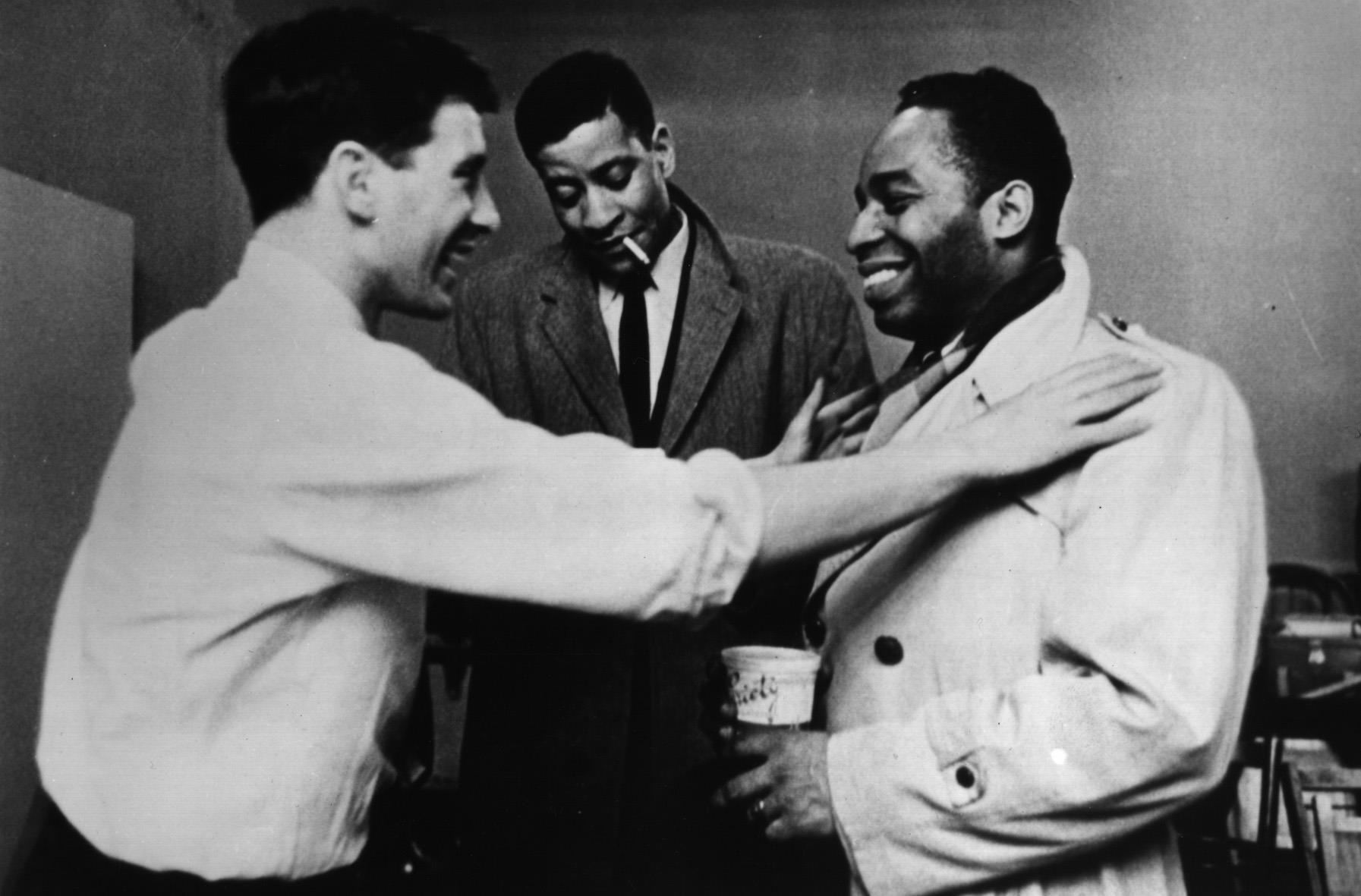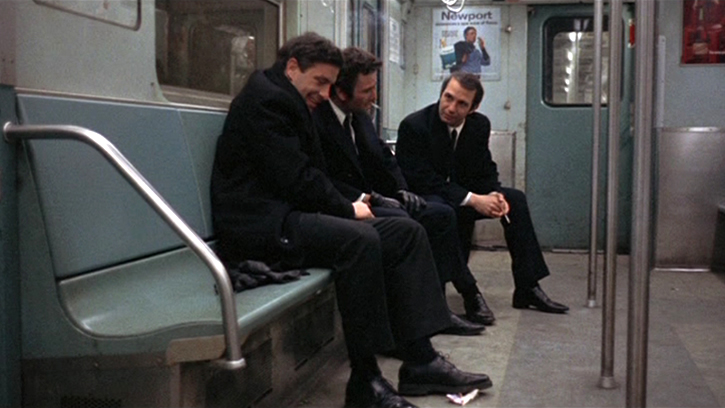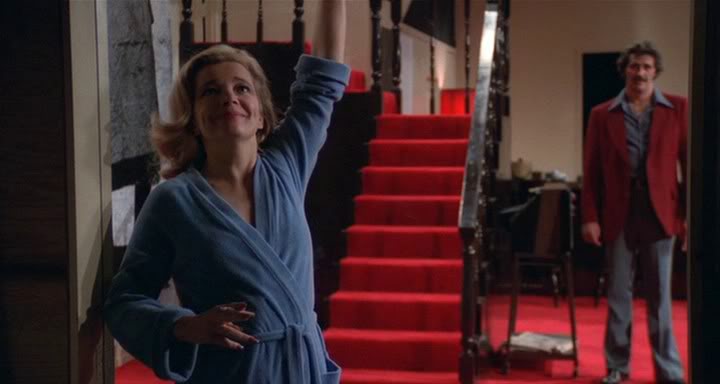If one were to bestow the crown the king of independent film, many could look to modern day counterparts, but those with more modern notions of independent film may miss the still undisputed legend of the genre; John Cassavettes A man who truly epitomised independence in film, a man who dealt with shoe-string budgets and who made films on the fringe about subjects that would make most studios squirm. Often financing his own films and surrounding himself with frequent collaborators who were usually friends or in the case of his legendary working relationship with Gena Rowlands, also his spouse until his death. Cassavetes is also known for his acting work in classic films such as The Killers, The Dirty Dozen and most famously as Guy Woodhouse in Rosemary’s Baby. Whilst also starring in other independent films such as the brilliant Elaine May penned and directed Mickey and Nicky, which he starred in with his own frequent acting collaborator Peter Falk. Cassavetes wrote and directed 10 films, directing two other films from scripts not of his own. But these scripts of his own were moulded and changed as the productions went on, with an abundance of improvisation with his actors leading the films to become the classics that they are now.
 |
| Credit |
For this retrospective article upon the month of the 31st anniversary of this legends death, I have chosen five of his films to look at, all marking different points in his working career. We will start with first ever film; 1959’s Shadows.
Shadows (1959)
 |
| Credit |
Shadows is interesting in many regards and it’s more so interesting to view as a piece of Cassavetes career, than it is as a feature film. The film was shot for only $40,000 and in Cassavetes own words; “will always be the film I love the best simply because it was the first”. Whereas other films on this list I would recommend to anybody, I feel like this is a work made for Cassavetes completionists, such as myself. The 1959 16mm improvisational film explores interracial relationships in New York City at a time where that was still an incredibly controversial thing in real life, never mind as a subject for a motion picture. Walkouts were common during its first run and in many ways I understand why. The film is quite frankly still to this day something that I’ve never seen before. I have of course seen experimental films and shoe-string budget films, but there is still something more urgent about Shadows that sets it apart from the other films of its ilk. The subject matter of the film and the proximity to the characters leads this film to be a lot more documentary like than some of his later features, despite the aesthetic of a documentary being present in all of his films. The film’s greatest asset is also its worst feature however, with the wall to wall jazz score of Charles Mingus, which is stunning and marvellous, but is also tremendously over-bearing in certain scenes and although it does lead to the rag-tag feel of the film, it does also hinder its overall performance. The picture’s closing credit boldly declares that “the film you have just seen was an improvisation” – a statement that will colour, dictate and mould the career of one of our great cinematic pioneers.
From this point on (bar 1976’s The killing of a Chinese bookie and 1970’s Husbands), all of Cassavetes films would also star, usually in the lead, his wife Gena Rowlands. I have written of this incredible partnership and before I go deeper into the films they made together, I’ll recycle those comments now below.
Paired with her husband John Cassavetes, Rowlands has given us some of the greatest performances of all time. My two personal favourites and the two films that I believe to hold her two greatest performances are 'A Woman Under the Influence’ and ‘Opening Night’. One could see the two as companion pieces, both women under tremendous stress going through severe mental breakdowns and dealing with serious mental health issues. But comparing the closing scenes of both films you can see two perfect examples of how to end these films and the two sides of “the broken woman” story. Rowlands performs with such ease, it’s transcendent.
But before we get to those two all-time classic performances, let’s now look at their incredible first partnership in film.
Faces (1968)
 |
| Credit |
We now move forward nine years to look at Cassavete’s next released film, Faces. Shot in Cassavete’s home, in cinema verite style, black and white 16mm film and financed by Cassavetes acting work in five films. The film was his first collaboration with Rowlands, portraying here a disillusioned prostitute named Jeanie. The film also marked the first collaboration for a Cassavetes future regular with cinematographer Al Ruban. With an original cut of around six hours, the film’s final 2 hours and 10 minute running time still feels sprawling, with long stretches where aim seems to vanish. But this feels all in aim to subdue the audience into a quality of realism as yet unseen in American cinema. The film follows the basic structure of a couple separating for the evening and finding themselves in two separate affairs with new people. This couple is played by Lynn Carlin and John Marley, who you may know better as Jack Woltz from The Godfather. It is rather well known that the working relationship between Marley and Cassavetes was rather acrimonious and not the great pleasure that his most frequent collaborators would enjoy time and time again. The film is loose and improvisational, as is the case with most of Cassavetes work, but is propelled by an overwhelming soundtrack of laughter from its characters. Every character is more or less constantly laughing, or telling jokes that will then lead to them laughing. It becomes almost nauseating infact and reminds me of the original trailer for the film adaptation of one of my favourite films of all time, Who’s Afraid of Virginia Woolf? which asked the question in certain advertisements; “What are they laughing about?” – the question could be asked the same here, but the answer seems to be wholly different. Here the laughter is to quell the pain that’s occurring in their lives. The film inspired Woody Allen and Robert Altman alike and the film is Cassavette’s only Academy Award nomination for screen-writing. And apparently, according to himself, it’s the favourite film of Steve Buscemi. Overall we begin to see in this film the genre unto itself that Cassavetes will create and work in for the rest of his career.
Husbands (1970)
 |
| Credit |
A Woman Under the Influence (1974)
 |
| Credit |
Following Minnie and Moskowitz (1971), greenlit by Universal pictures, in a hurried attempt to replicate the recent success of 1969’s Easy Rider, Cassavetes turned to make another film with Rowlands. From a script and a concept that he been developing amongst his collaborators during the making of Moskowitz. Cassavetes moved to make his most well known film and most critically acclaimed film; A Woman Under the Influence. One of the few films of his nominated for multiple Oscars, this film got nominations for Cassavetes directing (his only nomination in the field) and Rowland’s lead performance (with another nomination for her work in Gloria also directed by Cassavetes), ultimately winning neither. The story follows Mabel, a mother and wife, portrayed by Rowlands who ultimately subdues a complete mental breakdown. The story was originally conceived as a play, but Cassavetes was turned away from the idea by Rowlands, who believed that the story would simply be far too harrowing to perform repeatedly. The film is a truly harrowing piece of work and is not one that you find yourself returning to on many occasions, but it does draw you in over and over again, making it one of the most devastating character studies of all time. At this point financing was become a trouble with Cassavetes films time and time again not really clicking with audiences and most of the time not clicking with critics (at least at their time of release). Cassavetes re-mortgaged his home and Peter Flak even threw in some of his Columbo earnings, just to get the film made. Eventually after Cassavetes self-distributed the film with the aid of Jeff Lipsky, the film made $12 million. The film gets a visceral reaction out of its audience, with Richard Dreyfuss claiming that he vomited upon his first viewing of the film. It really doesn’t matter how many times you’ve seen it, it still unsettles and lacerates every time. Such is the power of the film and such is the power of Cassavetes, Rowlands and Falk.
Cassavetes next film was to be The Killing of a Chinese Bookie (1976), developed from a story idea conceived by Cassavetes and Martin Scorsese. Much has been made of the two cuts of the film. With its initial 135 minute cut being hated by its own star in Gazzara, leading to Cassavetes re-cutting the film in 1978, removing 27 minutes leading to a leaner 108 minute run time. An oddity regarding the film is that David Bowie can be seen during the crowd scenes at Cosmo’s crazy horse west, as he was often present on the set during filming. Overall the film is a very dark piece, but another thrilling addition to the Cassavetes cannon featuring a stellar performance for Gazzar, and another recomednation although I have focussed today to five singular films.
Opening Night (1977)
 |
| Credit |
The film that Cassavetes believed to be the best film that he has ever had anything to do with, and ultimately I’d have to agree. I find it very fitting to close out this article by looking at the film that I have always felt as his finest masterpiece. For my comments on Rowlands for my piece on the greatest female performances of all time, I paired both her performance here and Opening Night, for both films are explorations of women under extreme pressure going through severe mental health crises. But for me the theatrical element of Opening Night leads to a more nuanced performance from Rowlands. All in all the film does feel a lot more accomplished than the other films. Where the semi-improvisational style of verite came into great effect with certain films, it did falter in films such as Husbands. This truly is Cassavetes masterpiece, in my eyes. The film concludes with a far happier ending than Influence, even featuring many cameos from collaborators of Cassavetes, from Falk to Seymour Cassel, even including an appearance from fellow director Peter Bogdanovich. The final scene is a celebration of a great career and is a touching climax to a rather harrowing film, and yet it feels completely appropriate and not the least bit out of place and in viewing both this and Influence back to back, it made the ending of this film, all the more shocking. Perhaps that is the greatest summation of Cassavetes cannon; that it is the happy ending that takes you by the most surprise.
Cassavettes made two more films from his own scripts, both with Rowlands again. But Cassavettes last credited work as a director was as a favour to his dear friend Peter Falk in helping out finishing the broad and not very good comedy Big Trouble in 1986. But still, the legend of Cassavettes lives on and his work is still as thrilling, exciting and daring as it was in 1959 and in 1970 and in 1977 and all those years in-between, where he made multiple masterpieces and many excellent works of cinema between them. A deep-dive into Cassavettes work as a director, writer and even actor is a definite must for any film fan or budding film-maker.
- - Thomas Carruthers


0 Comments